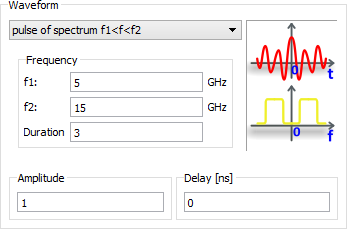
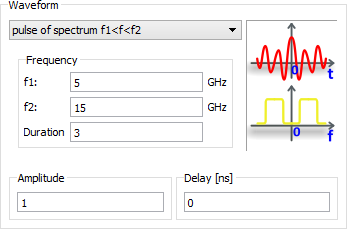
5.12 Waveform
There are several options for excitation waveform. After choosing one of them the parameters fields will be available and its time domain shape and frequency domain spectrum are displayed schematically in the Waveform part. The picture is only qualitative. There is however a way of obtaining precise information about the spectrum of the selected pulse with Power Available postprocessing.


A detailed discussion regarding all available waveforms is given in Excitation waveforms.
Beside the frequency spectrum limits, there is a parameter describing the pulse duration expressed as the number of periods of the signal of the frequency f2. Details regarding recommended values of this parameter for particular waveform are given in Pre-defined signal library.
Two other parameters seen in the considered dialogue window are amplitude and delay of the signal. They are irrelevant for calculations of S-Parameters or radiation patterns (in scaling other than "Fields at 1m" on the "Gain References" list). However, they may be important for visualisation of the effects of concurrent multi-port excitations, for simulation of nonlinear (e.g. temperature dependent) effects, or in cases when one wishes to directly monitor absolute values of fields or power.
Note that in case of template excitation, there is a direct correspondence between waveform amplitude and power available from the source. The details of this correspondence for the available waveforms are given in Pre-defined signal library.
It is worth noting at this point that according to the fundamentals of the periodic FDTD algorithm described in [17] in User Guide 3D: Bibliography chapter and implemented in QW-3D, real and imaginary grids of electromagnetic components are defined for periodic structures (3DP) and thus there are two additional parameters for the imaginary grid that should be also set: Amplitude and Delay.

The following types of excitation waveform are available:
No excitation

Delta
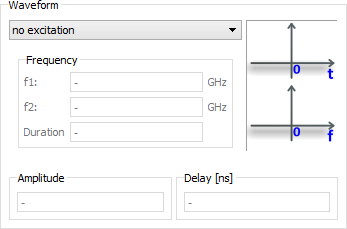
Sinusoidal
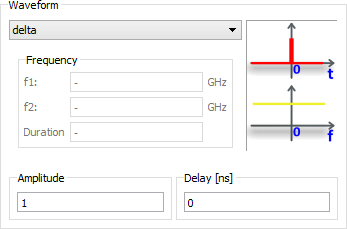
Pulse of spectrum f<f2
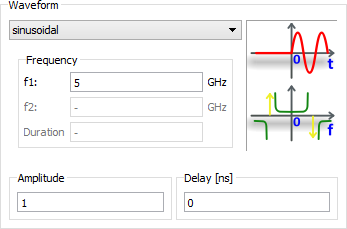
Pulse of spectrum f1<f<f2

Gauss of spectrum f=f1(-/+f2)

Step pulse
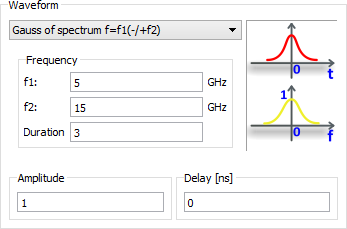
Step with finite rise time tr=1/f2
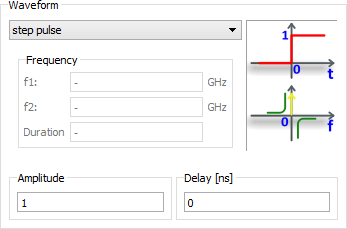
Defined by user

It is advised to refer to User defined signal excitation for detailed description of this waveform option and its requirements regarding the excitation file format.